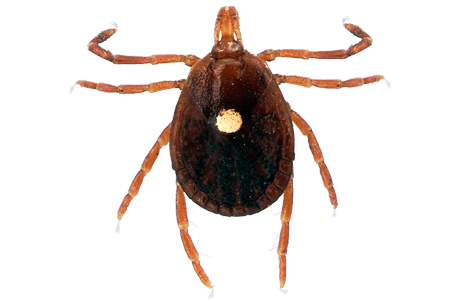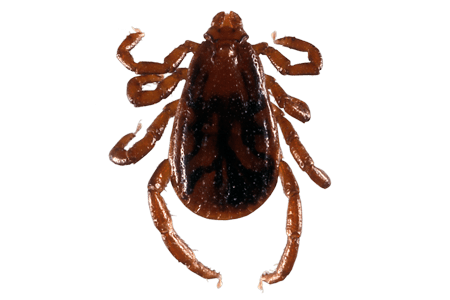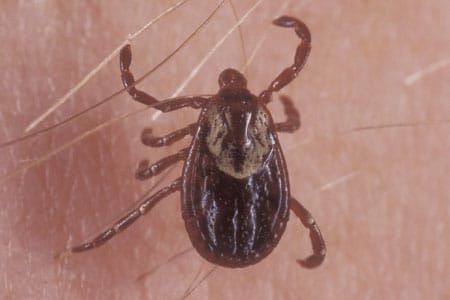Active Seasons




Tick Appearance and Size Facts
While they may be small, ticks pose a significant threat to those who live in your home—humans and pets alike. They bite their way through skin and feast on their host’s blood, sometimes spreading illness and disease in the process. They usually latch on in hard-to-see areas and are attracted to warm, moist regions of the body like the neck, underarms, and hairline.
The following are a few key characteristics of ticks.
- Adult ticks are about the size of a sesame seed.
- Nymph ticks are around the size of a poppy seed.
- Ticks are usually brown, gray, or a mix of both in color.
- They are arachnids and have eight legs.
- They have segmented bodies with plate-like armor.
- They don’t have antennae but do have distinct long jaws.
Set up your complimentary inspection today to prevent a tick takeover in your home.
We offer tick removal services in the following locations and their surrounding areas:
Types of Ticks

Behavior and Habitat of Ticks
Ticks are commonly found in grassy, wooded areas or around bodies of water. They don’t jump or fly but instead cling onto tall grass, shrubs, or trees and wait for an unsuspecting host to pass by. When an animal or human brushes against the vegetation, the tick latches on and begins to feed on its blood, potentially spreading diseases such as Lyme disease or Rocky Mountain spotted fever. After feeding, female ticks lay thousands of eggs, which hatch and restart the process.

Signs of Infestation of Ticks
Tick infestations can easily go unnoticed until they spiral out of control. Initial signs of a tick infestation include increased itching in pets and small, moving dark spots on their skin, as animals are often the first victims. Ticks can also be found on humans, especially after spending extended periods of time outdoors. If you discover signs of a tick infestation or begin to feel symptoms of potential illness, it’s important you quickly seek out professional care.

Tips for Prevention of Ticks
Once inside, it’s almost impossible to visually keep an eye out for ticks due to their minuscule size. However, there are some things you can do to prevent ticks from getting inside your home in the first place. Whenever hiking, doing yard work, or otherwise exploring the outdoors, tuck pants and sleeves in to reduce exposed body parts and avoid tall grass or other areas of extreme vegetation. You can also wear EPA-approved insect repellents to reduce your risk.
After you return home from your outdoor fun, it’s wise to conduct a thorough tick check of you and your loved ones. You can inspect your own body for the most part, but it can help to have a buddy check your back, your hair, and other less noticeable areas. Children and pets should be checked by an adult.
Getting Rid of Ticks
If you find a tick on you or your pet, use a pair of sterilized tweezers to carefully grasp the tick by its head and gently pull up in a straight motion until it exits the skin. For larger-scale tick infestations, your best bet is to invest in comprehensive, professional tick control services from Hulett.
Effective Tick Control Solutions
Don’t underestimate the amount of stress and harmful diseases ticks can cause. If you find signs of a tick infestation in your home, there’s no need to panic—just call Hulett! We offer top-of-the-line tick control services that help control and eliminate ticks on your property. That way, you can get back outside and enjoy nature worry-free. Get in touch with Hulett today to begin the process of saving your home from ticks!




